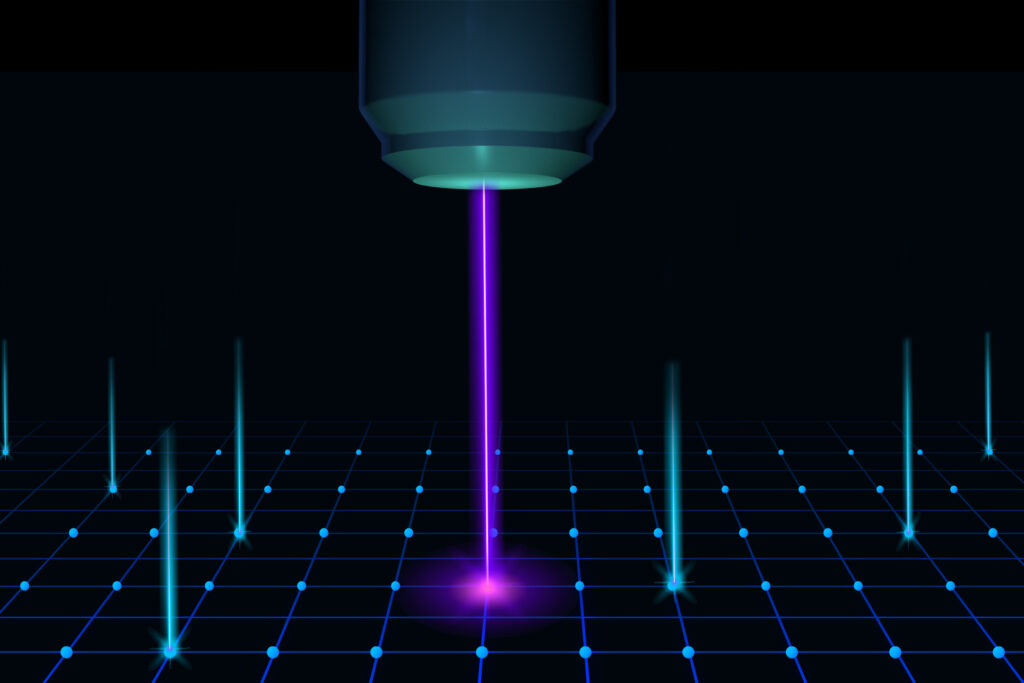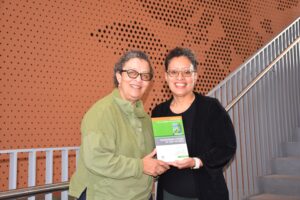
If you think of a single atom as a grain of sand, then a wavelength of visible light, which is a thousand times larger than the atom’s width, is comparable to an ocean wave. This size disparity has long made it impossible for scientists to see and resolve individual atoms using optical microscopes alone. However, a groundbreaking development by MIT scientists is set to change that.
In a paper published in Nature Communications, MIT researchers have introduced a new computational method that allows optical microscopes to resolve individual atoms and determine their precise locations within a crystal structure. This innovative technique, known as “discrete grid imaging technique” or DIGIT, leverages the known atomic configuration of materials to pinpoint atom positions with remarkable accuracy.
Overcoming the Diffraction Limit
The announcement comes as scientists have been striving to break the “diffraction limit”—a barrier that has historically prevented optical microscopes from visualizing features smaller than the wavelength of light. While super-resolution microscopy has made strides in this area, allowing visualization down to the scale of a single molecule, individual atoms remained elusive.
Lead author Yuqin “Sophia” Duan, a graduate student in MIT’s Department of Electrical Engineering and Computer Science, explains, “It’s like you know there’s a seating chart. Previous methods could tell you what section an atom is in. But now we can take this seating chart as prior knowledge, and can pinpoint exactly which seat the atom is in.”
With DIGIT, the team can now pinpoint individual atoms with a resolution of 0.178 angstroms. (One angstrom is one-tenth of a nanometer, which is less than half the width of a single atom.)
Implications for Quantum and Material Sciences
The move represents a significant advancement for fields such as quantum technology and material sciences. The ability to localize atomic-scale features in materials with known atomic patterns, such as crystalline materials, could guide the design of quantum devices, which often require precise atomic placement within a crystal structure.
Beyond quantum technologies, DIGIT offers new insights into how defects and impurities influence the behavior of advanced materials, from semiconductors to superconductors. This development follows a series of innovations aimed at enhancing the capabilities of optical microscopy.
Grid Support and the Role of Atomic Maps
Traditionally, scientists have used electron-based imaging methods to visualize features smaller than a nanometer. These methods, while effective, require high-energy beams and vacuum conditions, making them unsuitable for delicate biological specimens. Optical microscopes, on the other hand, operate at lower energies and in ambient conditions, but have been limited by the diffraction limit.
According to sources, the breakthrough came when Duan and her colleagues combined super-resolution techniques with statistical analysis and knowledge of material structures. They hypothesized that the physical configuration of a material could serve as a template to refine optical images.
“No one has ever done this before, to include the physical constraints or system information into the resolution technique,” Duan says.
Testing the Technique
To validate their approach, the researchers conducted experiments with a diamond sample, a material with a well-understood microstructure. By substituting some carbon atoms with silicon atoms, they aimed to identify and locate these silicon atoms within the diamond lattice.
Using super-resolution microscopy, they initially produced blurred images of the silicon atoms. However, by applying DIGIT and leveraging the known grid-like configuration of the diamond, they were able to sharpen the image and pinpoint the silicon atoms with unprecedented precision.
“Because the silicon atoms are substituting carbon atoms in the lattice, that means they must obey some integer multiple of the atomic spacing of the crystal lattice,” explains Professor Dirk Englund, a co-author of the study.
Future Prospects and Accessibility
The team has made the DIGIT code available on GitHub, encouraging scientists to apply it to their optical measurements, provided their samples have a well-understood atomic structure. This accessibility could lead to a surge in discoveries as researchers explore finer details and processes using optical microscopy.
“It’s a big step—it takes optical microscopes into the realm of atomic scale, something people thought only electron microscopes or X-rays could do,” Duan notes. “That opens up a whole new way of studying materials and biology.”
As the scientific community begins to explore the potential of this technique, the implications for both fundamental research and practical applications are vast. The ability to resolve individual atoms using optical microscopes not only enhances our understanding of material properties but also paves the way for innovations in technology and medicine.





